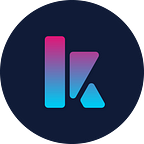QGas Distribution Mechanism on the QLC Chain
QLC Chain’s upgraded mainnet utilising the dual consensus of DPoS and PoW supports an improved QGas generation and distribution mechanism. By adding the PoW consensus layer, the new architecture allows for the more decentralised way of distributing QGas incentives to the mining and voting nodes.
This post is meant to give the explanation on the expected return of holding QLC Chain accounts and running QLC Chain-based nodes.
There is one account type and 2 role-based nodes in the QLC Chain network: stakeholder accounts, mining nodes and voting nodes.
Through DPoS consensus, a stakeholder is an active QLC account with QLC balance who owns the right of electing the voting node by delegating its voting power to any eligible voting node, and receives QGas rewards from staking.
Through PoW consensus:
A voting node is delegated with the voting power and executes its voting power to reach the consensus. The voting nodes receive part of the corresponding QGas rewards from the mining rewards.
A mining node is the one who packs the block. Miners compete with each other on the computing power. QLC PoV Chain utilize the SHA256d/Scrypt/X11 mining algorithms and supports AuxPow for merge mining of BTC/LTC/Dash.
- Highlights of the improved QGas distribution mechanism
The upgraded QLC Chain improves the QGas generation and distribution mechanism towards a more fair and decentralised mechanism by including voting nodes in sharing the QGas incentives from mining. This way combines two role-based distributions for both mining nodes and voting nodes.
2. Requirements of running nodes on the QLC Chain
To run a mining node
- Stake at least 100K QLC to gain the eligibility of running a mining node
To run a voting node
- Stake at least 1 QLC
- Possess at least 0.5% of the total voting power of the whole network which calculates to 3,000,000 QLC equivalent voting power
- Successfully run a voting node and keep it online in steady capacity
3. Role-based QGas distribution mechanism
In the previous QGas distribution design, a total volume of 100 million QGas rewards , also known as airdrop are distributed over the time period of 33 years which is approximately 8,302 QGas a day . An additional volume of 3% of the 100 million QGas are generated and awarded to the mining nodes which equals to 8,219 QGas a day.
With the new architecture of QLC Chain consensus protocol adopted, given the increasing difficulty of mining QGas, the amount of daily QGas rewards from staking QLC shall reduce, which is to say the total amount of QGas rewards from staking remains 100 million with the general distributing time extended.
- Daily QGas rewards from staking reduces when the overall difficulty of mining increases following the parameters below.
- Daily QGas incentives to mining is 8,219 QGas which calculates to 5.7 QGas/block.
- 60% of the QGas incentives are awarded to the mining nodes, voting nodes are awarded with the rest 40%.
In general, when the difficulty of the whole network reaches 1M and beyond, QGas rewards from staking reduce by half as with the difficulty grows by 10 times.
…
The computational power with its difficulty factor is examined and adjusted accordingly every 1440 blocks.
4. QGas distribution time
QGas distribution takes place when every 1440 QLC Chain blocks are generated. Please note there are no mining incentives for the very first 1440 blocks mined from the QLC Chain, the QGas incentives start distributing after the first 1440 blocks.
5. Explanation on voting power
An account’s voting power is proportional to the addup of its delegated voting power and the QLC account balance.
Voting power = The amount of staked QLC+ delegated voting power
- If an account delegates its voting power to any other voting node, it still receives the entitled QGas rewards (previously known as QGas airdrops) from staking.
- An account’s voting power with its right of receiving QGas incentives accordingly can be delegated to any of the eligible voting nodes at any time.
A, B, C each stakes 2 million Nep5 QLC and got 2 million QLC balance respectively in their QLC Chain accounts, A and B both delegate C as their voting node with 2 million QLC;
C delegates D as its voting node with 2 million QLC;
D stakes 500K Nep5 QLC and delegates himself as the voting node.
Read to understand more about QLC Chain
- Why QLC Chain utilises the dual-consensus protocols of DPoS and PoW
- Montnets Group and QLC Chain will launch the blockchain-based anti-fraud product with joint efforts
- QLC Chain Strengthens First Telecom Public Chain Development with 5G Approaching
- QLC Chain Can Help Carriers to Build a SWIFT-like Network Based on Direct Carrier Billing
Learn more about QLC Chain https://qlcchain.org/
